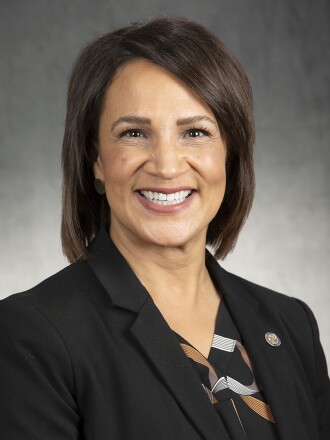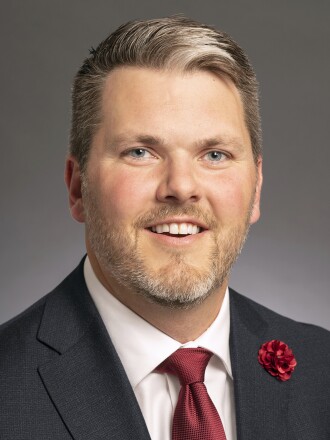ST. PAUL — Around 25 DFL lawmakers and state employee union members pushed back on Minnesota Gov. Tim Walz's remote work policy change during a press conference outside the Minnesota Capitol on Thursday, March 27.
Walz announced on Tuesday that state employees will be required to return to in-person work at least 50% of scheduled workdays come June 1.
ADVERTISEMENT
Union leaders and lawmakers Thursday said they had no notice of the policy shift, and don’t agree with the “unilateral” change.
“Workers are angry,” Rep. Luke Frederick, DFL-Mankato, said at Thursday’s rally in opposition to the policy announced by Walz. “Workers are threatening to quit over this. In conversations with the agencies, there's questions about how even to implement this, about whether or not there's even office space.”
The amended policy provides an exemption for employees who live more than 75 miles away from their primary work location, Walz’s office said in a March 25 press release. In the same press release, Walz’s office estimated that roughly 60% of state employees already work in-person and did so throughout the entirety of the COVID-19 pandemic.

“This approach balances the flexibility of telework with the workplace advantages of being in-office,” Walz said in the press release. “Having more state employees in the office means that collaboration can happen more quickly and state agencies can build strong organizational cultures more easily.”
Minnesota Association of Professional Employees (MAPE) and American Federation of State, County, and Municipal Employees (AFSCME) Council 5, were among the state employee unions at Thursday’s press conference opposing the order.. The two unions collectively represent roughly 40,000 — or two out of every three — state employees in Minnesota, according to MAPE President Megan Dayton.
“We were totally taken by surprise ...,” Dayton said Thursday. “There was no collaboration. There was no conversation ahead of time.”
Dayton said Thursday that she had not yet reached out to Walz for a meeting on the matter.
ADVERTISEMENT

Dayton said on Thursday that state employees are prepared to strike if necessary, and that they will settle for “nothing less” than the order being fully rescinded. Dayton said that there are some “legal hurdles” the union would have to jump through before striking, and that a strike couldn’t happen until their contracts expire on July 1, a month after the policy change is set to take effect.
“This is going to have devastating impacts on our members,” Dayton said. “We had some people reaching out yesterday after they got the order to look for day care for their kids. It's a six-to-nine-month wait list to get their kids in day care.”
Walz said at an unrelated press conference on Wednesday that he "understands the frustration" and will continue to have conversations with state employees.

"At the end of the day, I work closely with them. I value the right to collectively bargain these types of decisions," Walz said.
Walz said the state loses most employees during the first six months of their jobs, and he said he's concerned a lack of workplace culture is contributing to that.
"Call it old school, whatever, but it is certainly the practice across the public and ... in private sector, the energy that comes with being back in the office, the things that we gain together," Walz said.
Republicans are standing in defense of the proposed shift back to in-person work. Speaker of the House Lisa Demuth, R-Cold Spring, said Walz’s offer was “very generous.”
ADVERTISEMENT
“It was the right thing, even though it was overdue,” Demuth said in a statement. “Most Minnesotans don’t have the option to work even 50% from home. He’s given more than enough lead time by requiring a June 1 start, so I think the governor’s offer was very generous.”
Senate Minority Leader Mark Johnson, R-East Grand Forks, said that in-person work drives a better product.

“I’m glad Gov. Walz is calling workers back to the office,” Johnson said in a statement. “Running the state requires collaboration, accountability and direct engagement — something that simply can’t be fully achieved through home offices and Zoom meetings. In-person work fosters stronger teamwork, more efficient problem-solving and better service for Minnesotans.”
The executive branch, which represents 89% of state government employees, , according to a 2023 report by Minnesota Management and Budget (MMB). The Department of Human Services comprises 20% of the executive branch employees, with the Department of Transportation employing 14% and the Department of Corrections responsible for 11%, according to MMB’s report.
Republicans this session have as a potential money-saver during a tight budget crafting year, and have pitched two bills, / , which would require a report on vacant state office spaces.











